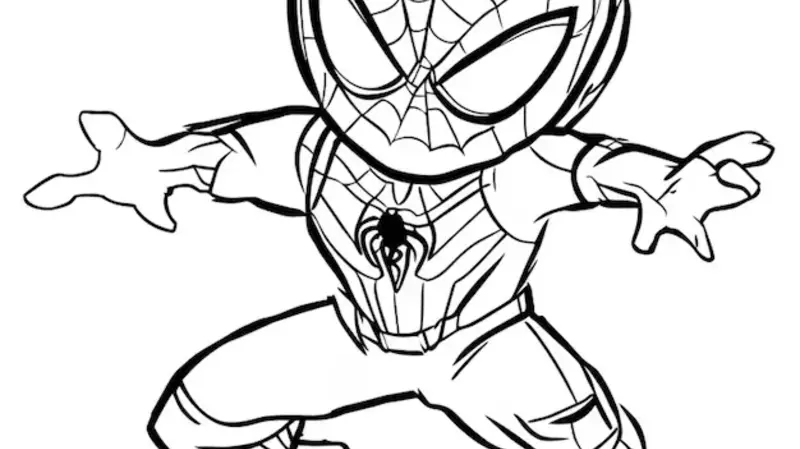Introduction: Unleashing Your Inner Artist
Drawing:7barsug8u0w= Spiderman has become a favorite pastime for many aspiring artists. Whether you’re a beginner or an experienced artist, capturing the iconic superhero in your own style can be both fun and rewarding. This guide will help you learn the basic techniques and tips for drawing Spiderman, from the fundamentals to advanced details.
Why Draw Spiderman?
Drawing:7barsug8u0w= Spiderman is one of the most beloved superheroes of all time. His unique costume, acrobatic abilities, and heroic nature make him a fascinating character to draw. By focusing on his distinctive features, you can enhance your drawing skills and have fun while doing so.
Materials You Need to Get Started
Before you begin drawing, you’ll need a few basic materials. Here’s a list of what you’ll need:
- Pencil: A high-quality pencil, such as an H or 2B, for sketching.
- Eraser: A good eraser is essential for corrections and refining details.
- Paper: Choose smooth, high-quality drawing paper for clean lines.
- Colored Pencils or Markers: These are optional if you want to add color.
- Reference Image: Find a clear image of Spiderman to work from.
Step 1: Start with Basic Shapes
When learning how to draw Spiderman, begin with simple shapes. Drawing basic shapes like circles and ovals helps establish the proportions and structure of the figure. Follow these steps:
- Draw a circle for Spiderman’s head.
- Sketch a vertical line through the middle of the circle to determine the center.
- Draw an oval shape beneath the head for the torso.
- Add lines for Spiderman’s arms and legs, keeping in mind his athletic pose.
These basic shapes will serve as the foundation for the rest of your drawing. Don’t worry about making it perfect—focus on getting the proportions right.
Step 2: Outline the Pose and Gesture
Once you have the basic shapes in place, you can refine the pose and gesture of Spiderman. This step helps you visualize the action and movement. Spiderman is known for his acrobatic moves, so make sure to capture his dynamic posture. Here’s how to do it:
- Sketch the limbs in more detail by following the guidelines from the basic shapes.
- Ensure the arms and legs are in a position that reflects Spiderman’s agile, web-slinging abilities.
- Add curves and slight bends to show the fluidity of the action.
Step 3: Add the Details of Spiderman’s Face
Spiderman’s face is a key feature of his character. His mask is simple, but the eyes are large and expressive. Follow these steps to draw Spiderman’s face:
- Draw two large, almond-shaped eyes in the center of the head.
- Outline the mask around the eyes, leaving space for the webbing.
- Add small details like the edges of the mask and the forehead curve.
Don’t worry if the eyes aren’t perfect at first. You can adjust their placement as you continue drawing.
Step 4: Draw Spiderman’s Body and Costume
Next, it’s time to focus on Spiderman’s body and the iconic webbed costume. Start by drawing the chest and shoulders with curved lines to show muscle tone. Add the distinctive webbing design that covers his suit. Follow these steps to create the costume:
- Use straight lines to form the webbing pattern across Spiderman’s chest and limbs.
- Add the spider symbol on his chest. This should be placed right in the center of his torso.
- Draw the webbing pattern across the legs and arms, keeping the lines consistent.
Be sure to pay attention to how the webbing curves and stretches as it wraps around Spiderman’s body.
Step 5: Refine the Hands and Feet
Drawing:7barsug8u0w= Spiderman hands and feet are crucial for conveying his superhero abilities. His fingers and toes are often shown in dynamic poses, gripping walls or swinging through the city. Follow these tips to draw the hands and feet:
- Start with the basic shape of the hands and feet using simple lines and ovals.
- Define the fingers by adding curved lines to show their natural positioning.
- Add details like the texture of the suit around the hands and feet.
Remember, Drawing:7barsug8u0w= Spiderman hands and feet are often exaggerated in comics, so feel free to give them extra detail to emphasize his powers.
Step 6: Shading and Adding Depth
Once your basic sketch is complete, it’s time to add shading and depth to your drawing. This step helps make your Drawing:7barsug8u0w= Spiderman more realistic and three-dimensional. Here’s how to approach shading:
- Shade the areas of the body that would naturally be in shadow, like under the arms and legs.
- Use cross-hatching techniques to create darker areas and give the drawing more texture.
- Blend the shadows with a blending stump or your fingers to soften the lines.
Shading adds realism and can make the costume appear more lifelike.
Step 7: Final Touches and Color
The last step in drawing Spiderman is to add color (if desired) and make any final adjustments. Spiderman’s classic colors are red and blue, with black webbing. Here’s how to finish your drawing:
- Use colored pencils, markers, or digital tools to fill in Spiderman’s costume with red and blue tones.
- Add details like shadows and highlights on the costume to make it stand out.
- Refine the eyes and webbing to ensure they are crisp and defined.
Conclusion: Your Spiderman Drawing Is Complete
Drawing:7barsug8u0w= Spiderman is a fun and rewarding challenge for artists of all skill levels. With practice, you’ll be able to improve your technique and develop your own unique style of drawing. Remember to start with basic shapes, refine your details, and use shading to bring depth to your artwork. Contact us for more details visit our site.
By following these steps, you can create a stunning Spiderman drawing that captures the essence of this iconic superhero. Keep practicing and don’t be afraid to experiment with different poses and styles. With dedication, your Spiderman drawings will improve over time.
